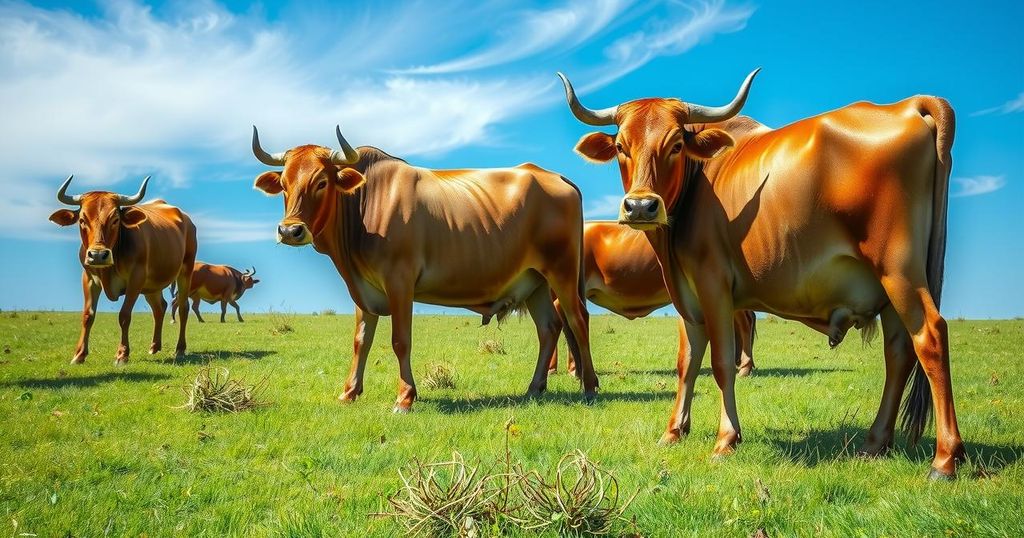The Ongole cattle breed is declining in India while thriving in Brazil, where it is now among the most valuable breeds. The population in India has decreased drastically from 1.5 million in 1944 to 634,000 in 2019. Factors contributing to the decline include a preference for crossbred cattle and mechanization in agriculture. Conservation efforts are ongoing but face challenges due to market demand.
India’s indigenous Ongole cattle breed is experiencing a significant decline domestically, despite their flourishing status in Brazil, where they rank among the most valued cattle breeds. A report by The Indian Express emphasizes that in Brazil, 80 percent of the 226 million cattle are Ongoles, predominantly bred for beef production. The recent record-breaking sale of a purebred Ongole cow, Viatina-19, for $4.38 million in Minas Gerais demonstrates the breed’s escalating worth in the global market.
Conversely, India has witnessed a drastic reduction in its Ongole cattle numbers, shrinking to just 634,000 in 2019 from 1.5 million in 1944, despite efforts by the government to conserve this breed. Additionally, the overall indigenous cattle population has declined by 9 percent between 2007-2012 and another 6 percent from 2012-2019, while exotic and crossbred cattle populations have surged nearly 30 percent. Many Indian farmers continue to favor crossbred cows for their superior milk yield, despite initiatives such as the Rashtriya Gokul Mission advocating for indigenous breeds.
Ongole cattle, also known as Ongolu Gitta, originate from the Prakasam District in Andhra Pradesh and are known for their heat tolerance and disease resistance. These attributes have made them well-suited to Indian climatic conditions. Furthermore, since 1885, Ongole bulls have been exported to Latin America, with around 7,000 sent to Brazil, profoundly influencing the region’s agriculture.
Several factors have contributed to the decline of Ongole cattle in India, including a market shift towards crossbred cattle with greater milk yields and decreased demand for draught animals due to mechanization. Experts indicate that the traditional selective breeding for physical strength over milk production has diminished the breed’s prominence, particularly as farming practices evolve.
Veterinary specialists at Guntur’s LAM Farm, one of the limited centers dedicated to conserving Ongole cattle, are employing advanced techniques such as IVF-embryo transfer to preserve the breed’s purity. However, they face challenges stemming from the reduced market demand for Ongole cattle. India has maintained restrictions on cattle exports since the 1960s; though there were proposals to lift this ban in 2023, they led to significant backlash. In contrast, Brazil’s stringent lineage tracking continues to elevate and sustain the breed, establishing a model that Indian farms might consider emulating.
In summary, the Ongole cattle breed’s decline in India juxtaposes sharply with its thriving status in Brazil, where it has achieved significant economic value. Factors such as preference for crossbred cattle, mechanization of farming, and historical export practices have contributed to this decline. Despite efforts to conserve the breed, challenges persist, highlighting the need for new strategies to boost the population and value of Ongole cattle in their native country.
Original Source: www.business-standard.com




